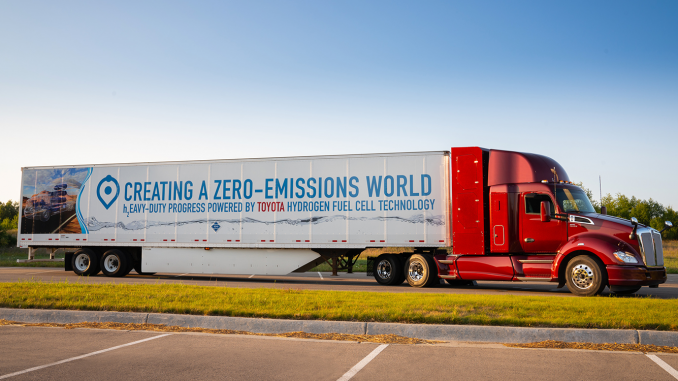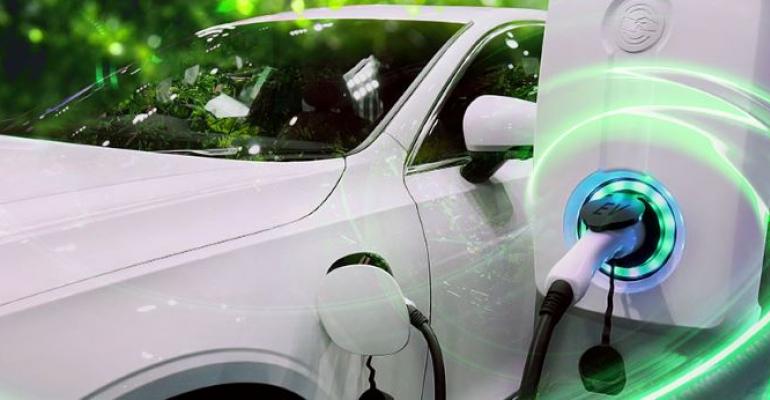OTTAWA – The Canadian auto sector says it’s disappointed that its federal government has not done more in its latest budget to grow electric-vehicle sales.
While industry associations welcome an expansion of financing for EV purchase subsidies and the development of battery-mineral production, more money is needed, they say.
Canada’s new federal sales mandate calls for zero-emission vehicles to comprise at least 20% of new light-duty vehicle sales (including CUVs, SUVs and pickups) by 2026, at least 60% by 2030 and 100% by 2035.
Brian Kingston, president and CEO of the Canadian Vehicle Manufacturers Assn., (CVMA), says he had hoped subsidies would “connect the dots” between those mandates, EVs’ current 5.6% share of Canadian new-vehicle sales and major investments being announced by manufacturers.
But with the budget making no mention of increasing the federal subsidy from C$5,000 ($3,960) per vehicle, an additional C$1.7 billion ($1.35 billion) to extend the Incentives for Zero-Emission Vehicles (iZEV) program until March 2025 would not be enough to bring EV sales to 20% of all new purchases, he says.
“The budget falls short in that aspect,” Kingston (pictured, below left) tells Wards.
 David Adams, CEO and president of the Global Automakers of Canada, argues the federal subsidies are enough to assist 380,000 EV purchases over the next three years. That is only half the number of zero-emission vehicles needed to hit 20%.
David Adams, CEO and president of the Global Automakers of Canada, argues the federal subsidies are enough to assist 380,000 EV purchases over the next three years. That is only half the number of zero-emission vehicles needed to hit 20%.
“Is it a help? Yes. Is it adequate? No,” he says.
There are similar concerns over the budget’s investment plans for public charging points. There are commitments, such as investing C$500 million ($400 million) via the Canada Infrastructure Bank into urban and commercial ZEV charging and refueling infrastructure. The budget also says C$400 million ($320 million) will be spent by the Natural Resources Canada ministry to fund charging infrastructure in suburban and remote communities. But the overall goal remains adding 50,000 new ZEV chargers and hydrogen stations across Canada, and that, Kingston says, is not enough to enable a widespread shift to EV use.
“That will require millions of publicly accessible chargers,” he says.
Adams concurs, saying, “Nothing will dissuade a consumer from purchasing an EV faster than not knowing if they can charge their vehicle quickly when they need to.”
On the plus side, the budget released April 7 says the iZEV program will be expanded to support the purchase of more vehicle models, including more vans, trucks and SUVs, “which will help make ZEVs more affordable,” with details to follow in the coming weeks.
Also, Kingston is happy with major funding announced in the budget for developing critical minerals production and processing which can be utilized by Canada-based EV battery plants, such as the factory being established in Windsor, ON, by Stellantis.
This C$3.8 billion ($3 billion) funding “is really good to see,” he says, including a proposed C$1.5 billion ($1.2 billion) investment in infrastructure which will help establish EV battery-mineral mines that could tap resources in remote parts of Canada, much of which is lightly inhabited and inaccessible.
Planned tax credits will encourage exploration of minerals by reducing up-front costs for prospectors. Kingston wants money from this minerals budget line to also encourage processing plant investment, so that raw materials are refined sufficiently for use by Canada-based battery manufacturers.
The budget says, “These investments will contribute to the development of a domestic zero-emissions vehicle value chain, including batteries, permanent magnets, and other electric vehicle components.”
Other elements within the budget affecting the auto sector include spending C$547.5 million ($435 million) over four years from 2022 on a new purchase incentive program for medium- and heavy-duty ZEVs. The federal government also will spend C$33.8 million ($26.8 million) on harmonizing ZEV regulations imposed by Canadian provinces and conducting safety testing for long-haul zero-emission trucks (pictured, below).

Canada’s finance ministry will develop an investment tax credit of up to 30% for innovators developing net-zero-emissions technologies, battery storage solutions and clean hydrogen systems.
The budget also raises tax-deduction ceilings for zero-emission-vehicle purchases, from C$55,000 to C$59,000 ($43,700 to $47,000), before tax.
Kingston also endorses funding to improve Canada’s supply-chain infrastructure – which will ease the movement of materials, components and vehicles around the country. The budget allocates C$450 million ($357 million) over five years under a “national trade corridors fund” for this purpose.
The budget does not indicate whether EVs would be removed from a planned new luxury tax, which is due to take effect in September and which would be charged on purchases of cars with retail prices exceeding C$100,000 ($79,500). The finance ministry is still consulting on the tax regulation’s details, so an exemption is possible.
In conclusion, the CVMA says, “The budget is a start but a serious, integrated, long-term plan is required now to boost consumer incentives and build charging infrastructure.”





